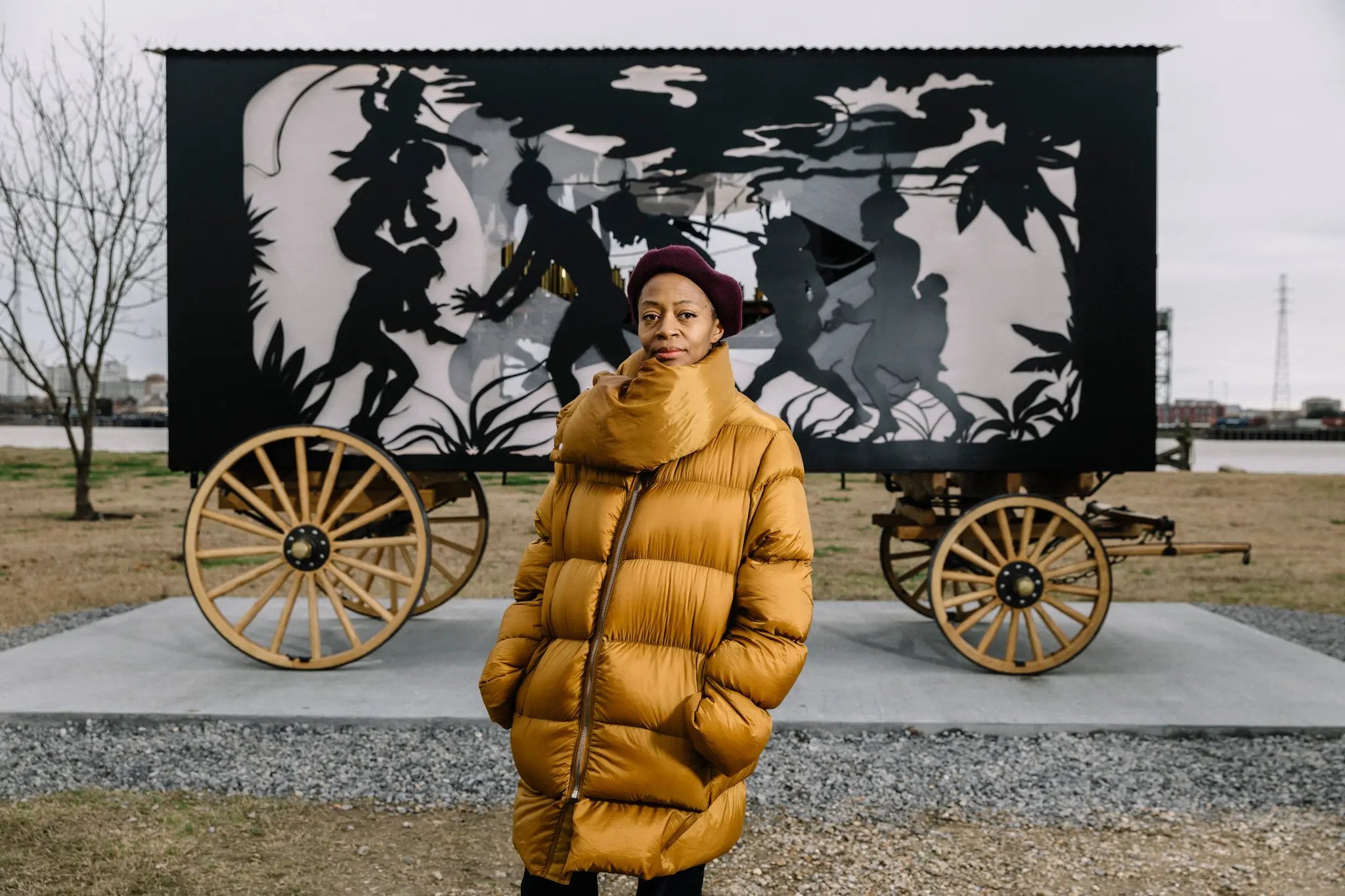Artist Spotlight: Kara Walker
Kara Walker and ‘The Katastwof Karavan’. Photo credit: William Widmer for The New York Times
Kara Walker may not be from the Northeast Louisiana Delta, but her art speaks a language this region knows well. A language too many forget. A language we work to keep alive here at the museum.
Born in Stockton, California in 1969 and raised in Atlanta, Georgia from the age of 13, Walker is one of the most important contemporary African American artists of our time. Her work confronts the brutal realities of slavery, oppression, and the deep racial wounds that shaped the South—including the Delta. While she may not have direct ties to Northeast Louisiana, her art cuts through time, bridging past and present with an urgency that feels deeply familiar.
Her signature medium—silhouetted cut-paper installations—draws from the mannered aesthetic of 19th-century portraiture, only to distort into something raw and unsettling. These stark black figures against white backdrops tell stories of slavery, survival, and how history lingers in our collective memory. The contrast is more than visual; it’s thematic. The genteel and the grotesque, beauty and brutality, myth and truth—her work forces us to confront all of it at once.
Walker’s impact has reached Louisiana and the Mississippi Delta in powerful ways. In The Katastwóf Karavan (2018)—Haitian Creole for “Catastrophe Caravan”—Walker constructed a towering steel wagon lined with her signature silhouettes and placed it at Algiers Point in New Orleans, a historic holding site for enslaved Africans. Inside, a steam-powered calliope blasted gospel, blues, and jazz into the air—a defiant, living memorial refusing to be silent.
‘The Katastwof Karavan’, Algiers Point in New Orleans. Photo credit: Alex Marks
Then there’s African’t (1996), arguably her most well-known work. This life-sized panorama of silhouetted figures transforms the gallery space into a stage of both remembrance and reckoning. At first glance, its cut-paper precision is elegant, almost playful—until you step closer. Then, the genteel aesthetic shatters, laying bare the contradictions of the antebellum South, where refinement coexisted with unthinkable cruelty, where stories of civilization were built on the backs of the enslaved. Her figures—enslaved people, masters, grotesque caricatures—interact in disturbing, absurd tableaus.
Installation view Hammer Museum, Los Angeles, 2008. Photo by Joshua White.
African’t directly confronts the romanticized myths of the Old South, rejecting nostalgia and speaking instead to the persistence of racial violence—to history repeating itself in new forms.
Walker’s work preserves stories of Black resilience, art, and culture. At the Northeast Louisiana Delta African-American Heritage Museum, we strive to do the same—excavating truths, shaking off the dust, and making sure the world sees what it may be trying to forget.
Visit us. Walk through history. Experience the power of Black artistry—past and present.



